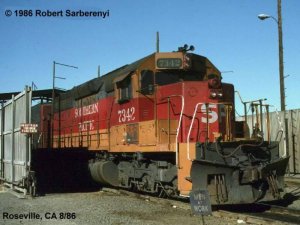Originally Posted by breezinup:
Shasta Daylight colors in the top two pictures, vs. the Coastal Daylight colors in the bottom picture.
First let me say that you are letting some pretty crappy "color" photos cloud your judgement!
So, that said please allow me to present to you actual Southern Pacific technical paint specifications for the red & orange colors for ALL types of equipment:
1) Dupont #83-5451 RED, used on ALL passenger equipment, steam locomotives, and diesels specified to be painted in "Daylight Colors".
2) Dupont #83-5452 ORANGE, used on ALL passenger equipment, steam locomotives, and diesel locomotives specified to be painted in "Daylight Colors".
In conclusion, your assumption that the "Shasta Daylight" and the "Costal (sic.) Daylight" (they are 'Coast Daylight' Trains, NOT Costal) passenger trains were painted two different colors, is thus incorrect!
The California sun of course faded the red & orange colors over time, and it was certainly NOT uncommon to see any of the Daylight painted passenger equipment with odd looking color combinations, regardless whether the steam era, or diesel era. But to state that the SP had two different color specifications for different named Daylight passenger trains, is not consistent with the SP Mechanical Departments painting specifications.







